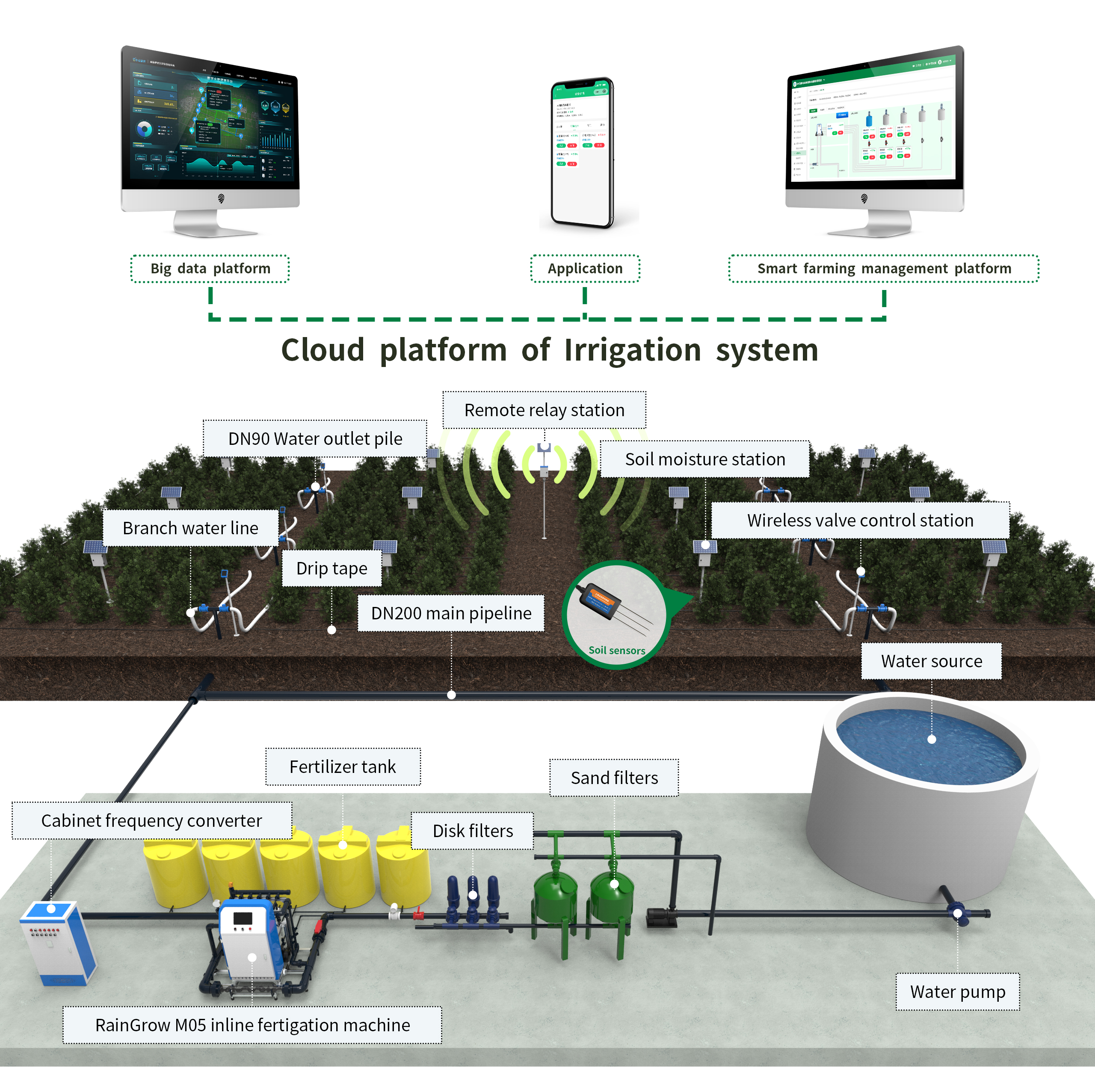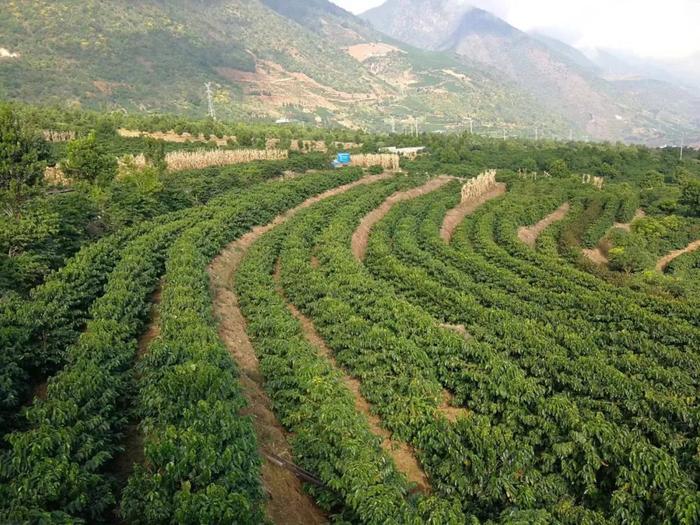Coffee
2024-06-05
Utilizing Drip Irrigation Technology for Coffee Cultivation
Introduction:
XiaomaIOT drip irrigation technology presents an efficient and sustainable solution for coffee cultivation, particularly in regions facing water scarcity. By delivering water directly to the plant’s root zone, this method minimizes water waste, reduces labor costs, and enhances crop yield and quality. This guide outlines an effective strategy for implementing drip irrigation in coffee farming.

Materials and Equipment Required:
- Drip irrigation system components (tubing, emitters, connectors)
- Water source (well, reservoir, or municipal supply)
- Filtration unit
- Pressure regulator
- XiaomaIOT Fertigation machines
- Water storage tank (if needed)
- Soil moisture sensors
- XiaomaIOT automated irrigation controller
- Coffee seedlings or plants
- Shovel, stakes, and mulch


Step-by-Step Guide:
Site Assessment and Planning:
- Evaluate the topography, soil type, and water availability of the plantation area.
- Create a layout plan of the field, marking rows and spacing for coffee plants. Typically, coffee plants are spaced 1.5 to 2 meters apart within rows and 2 to 3 meters between rows.
System Design:
- Design the drip irrigation system based on the field layout. Key components include mainlines, sub-mainlines, laterals, and emitters. XiaomaIOT irrigation system ensures uniform distribution of water across all plants.
- Select emitters with a discharge rate that matches the water requirements of coffee plants, usually between 2 to 4 liters per hour (L/h).
Installation:
- Main and Sub-Main Lines: Lay the main and sub-main lines along the rows of coffee plants. These lines should be connected to the water source and fitted with a filtration unit to prevent clogging.
- Pressure Regulator: Install a pressure regulator to ensure consistent water pressure throughout the system.
- Laterals and Emitters: Run lateral tubing from the sub-main lines along each row of plants. Place emitters near the root zone of each coffee plant.
- Soil Moisture Sensors: Install soil moisture sensors at various points in the field to monitor soil moisture levels and optimize irrigation schedules.
Water Source and Storage:
- Connect the mainline to a reliable water source. If there are fluctuations in water availability, consider using a storage tank to ensure a steady supply.
- Ensure the water source is clean and, if necessary, use a filtration system to remove impurities that could block the emitters.
Automation and Control:
- Use XiaomaIOT automated irrigation system to manage the irrigation schedule. Set the irrigation plan based on the data from soil moisture sensors, ensuring plants receive adequate water without over-irrigating.
- Programmable controllers can adjust watering frequency and duration according to weather conditions, soil type, and plant growth stages.
Fertigation:
- Incorporate a XiaomaIOT fertigation machine into the drip system to apply nutrients directly to the root zone. Use water-soluble fertilizers suitable for coffee plants.
- Schedule fertigation based on the growth stage of the coffee plants and soil nutrient levels. Regular soil and leaf testing can guide nutrient management.
Mulching:
- Apply organic mulch around the base of the coffee plants to conserve soil moisture, suppress weeds, and enhance soil health.
- Mulching can reduce evaporation and improve the efficiency of the drip irrigation system.
Monitoring and Maintenance:
- Regularly check the system for leaks, clogs, or damage. Clean filters and flush the lines periodically to maintain optimal performance.
- Monitor plant health, soil moisture, and overall system efficiency. Adjust the irrigation schedule as needed based on weather conditions and plant water needs.
Return to solution
To create smart indoor-control agriculture solutions

Xiaoma IOT
Treat every 1% opportunity with a 100% attitude!
版权所有©秦皇岛小马物联网科技开发有限公司 冀ICP备15028506号-1

